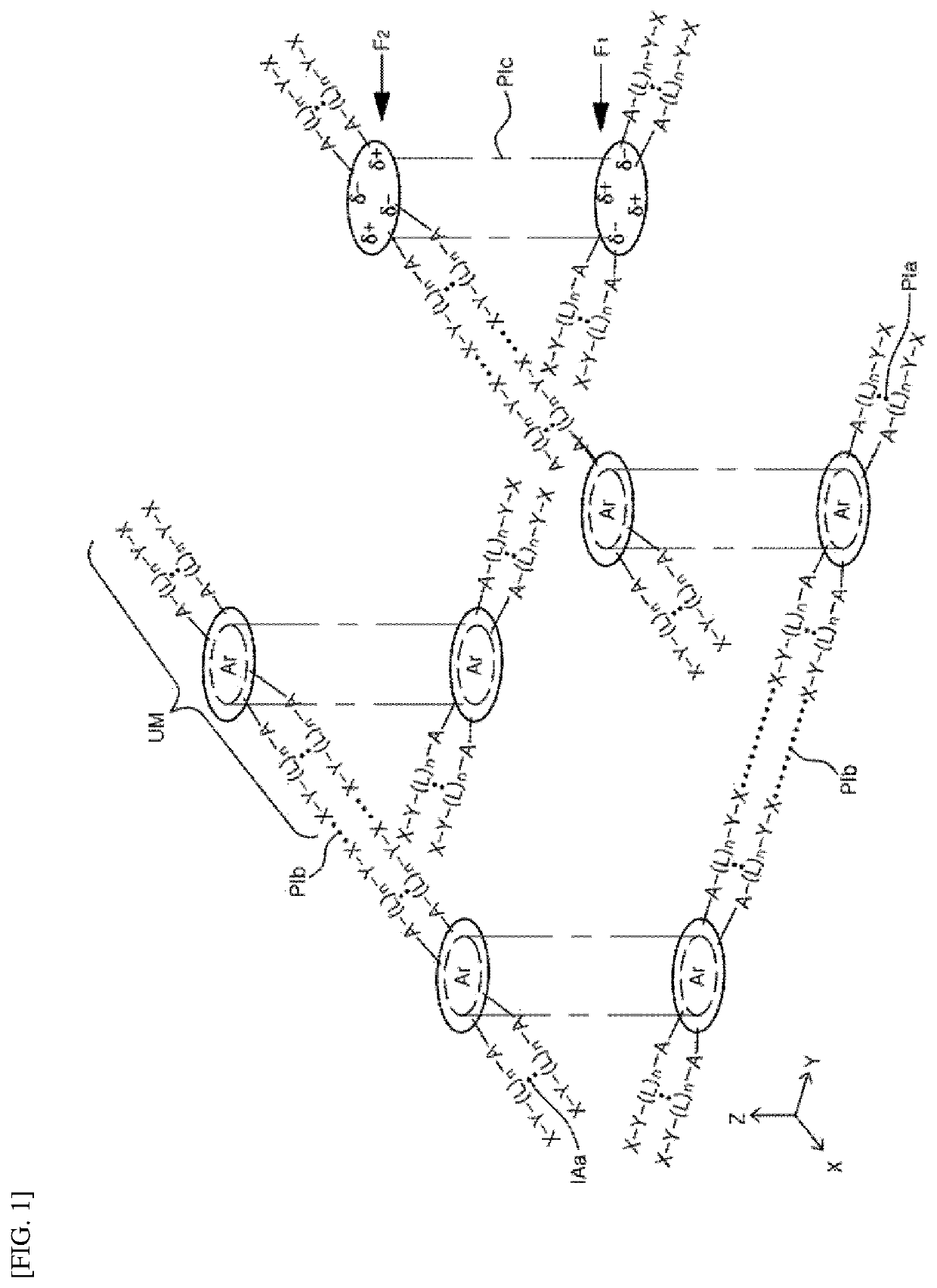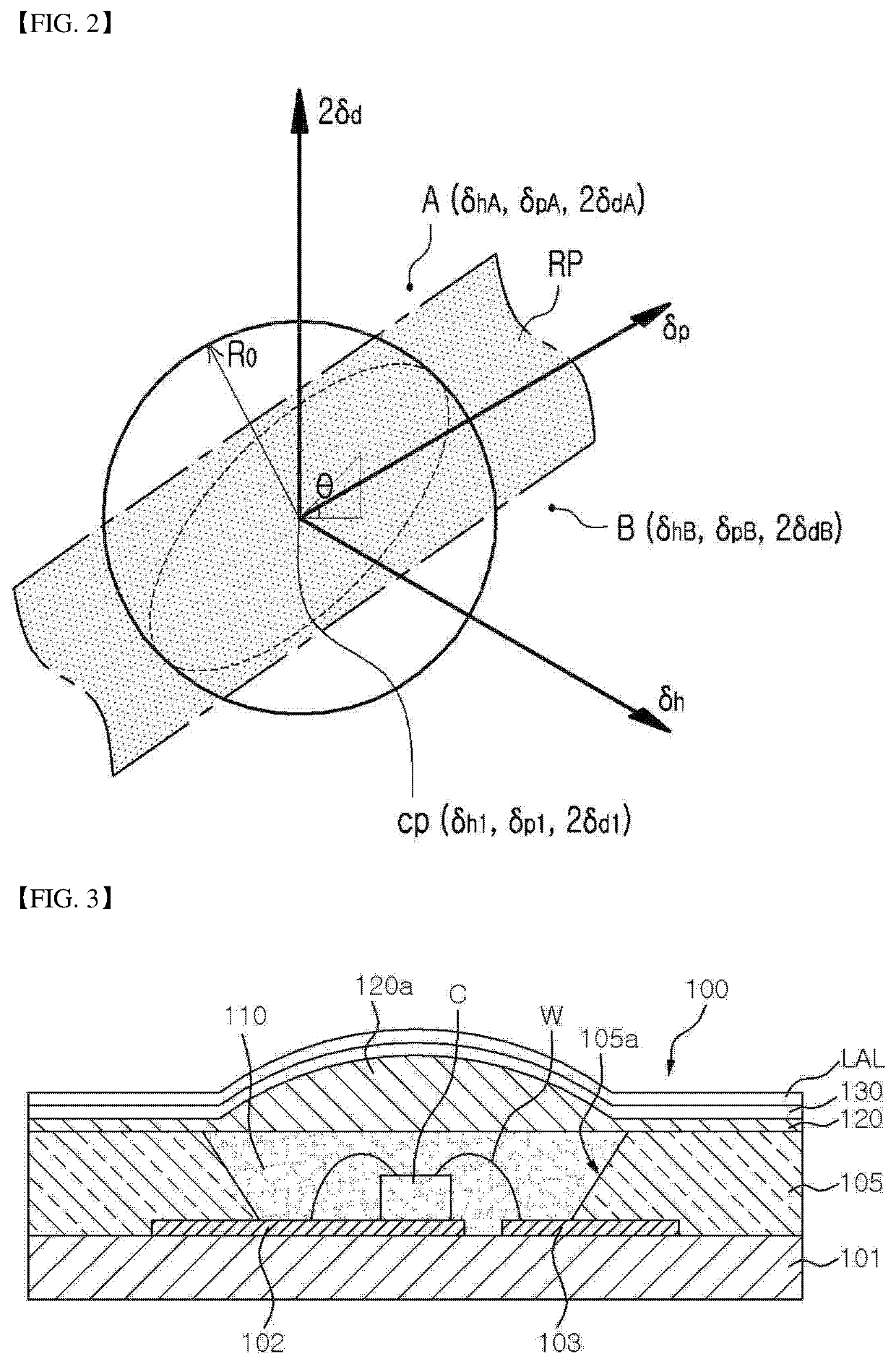Organic compound, three-dimensional organic framework formed by using organic compound, separation sieve and optical layer, which comprise organic framework, and optical device comprising optical layer as optical amplification layer
a three-dimensional organic structure and organic compound technology, applied in the direction of solid-state devices, electrical appliances, basic electric elements, etc., can solve the problems of rapid collapse of three-dimensional structures and inability to use mof as a separation sieve in aqueous environment, and achieve the effect of large void volume, effective separation, and easy and simple formation
- Summary
- Abstract
- Description
- Claims
- Application Information
AI Technical Summary
Benefits of technology
Problems solved by technology
Method used
Image
Examples
preparation example 1a
Compound Preparation of 4,5,9,10-tetrakis (dodecyloxy)-pyrene
1A-1. Preparation of pyrene-4,5,9,10-tetraone
[0340]Pyrene (10 mmol) was dissolved in a solution of dichloromethane (40.0 ml) and acetonitrile (40 ml), and then the solution was refluxed at 40° C. for 16 hours with ruthenium (III) chloride hydrate (0.25 g, 1.2 mmol) and sodium metaperiodate (NaIO4) (17.5 g, 81.8 mmol) in distilled water (50.0 mL) to produce pyrene-4,5,9,10-tetraone.
[0341]Pyrene-4,5,9,10-tetraone: 1H NMR (600 MHz, DMSO-d6) δ 8.32 (d, 4H), 7.71 (t, 2H)
1A-2. Preparation of 4,5,9,10-tetrakis(dodecyloxy)-pyrene
[0342]The pyrene-4,5,9,10-tetraone (10 mmol) obtained in 1A-1 was dissolved in distilled water (50 ml) and tetrahydrofuran (THF) with bromotetrabutylammonium (Bu4NBr) (13 mmol) and sodium hydrosulfite (Na2S2O4) (115 mmol) and refluxed at 65° C. for 5 minutes. An aqueous solution prepared by dissolving bromododecyl (60 mmol) and KOH (306 mmol) in distilled water (50 ml) was added to the reaction solution a...
preparation example 1b
Compound Preparation of 4,5,9,10-tetrakis (tetradecyloxy)-pyrene
[0345]The same procedure as in Preparation Example 1A was conducted except that bromotetradecyl was used instead of bromododecyl in the above 1A-2 to prepare 4,5,9,10-tetrakis(tetradecyloxy)-pyrene (R═C14H29 in Reaction Scheme 5, compound 12) (yield: 70%).
[0346]4,5,9,10-tetrakis(tetradecyloxy)-pyrene: 1H NMR (600 MHz, CDCl3) δ 8.32 (d, 4H), 7.71 (t, 2H), 4.21 (t, 8H), 1.91 (m, 8H), 1.57 (m, 8H), 1.40-1.27 (m, 64H), 0.88 (t, 12H)
[0347]FIG. 9 is a 1H-NMR spectrum of 4,5,9,10-tetrakis(tetradecyloxy)-pyrene according to Preparation Example 1B measured in a CDCl3 solvent.
PUM
 Login to View More
Login to View More Abstract
Description
Claims
Application Information
 Login to View More
Login to View More - R&D
- Intellectual Property
- Life Sciences
- Materials
- Tech Scout
- Unparalleled Data Quality
- Higher Quality Content
- 60% Fewer Hallucinations
Browse by: Latest US Patents, China's latest patents, Technical Efficacy Thesaurus, Application Domain, Technology Topic, Popular Technical Reports.
© 2025 PatSnap. All rights reserved.Legal|Privacy policy|Modern Slavery Act Transparency Statement|Sitemap|About US| Contact US: help@patsnap.com



